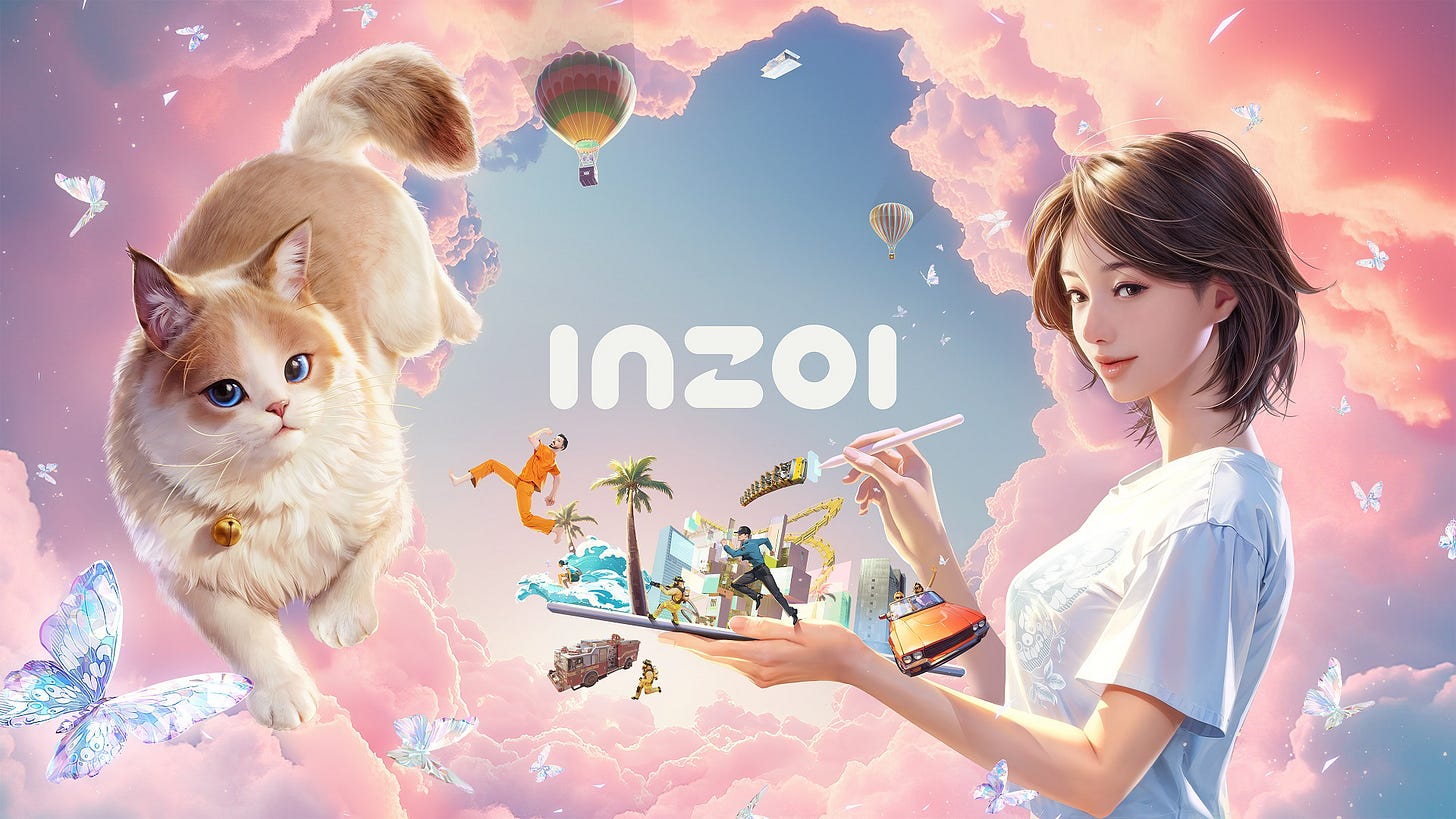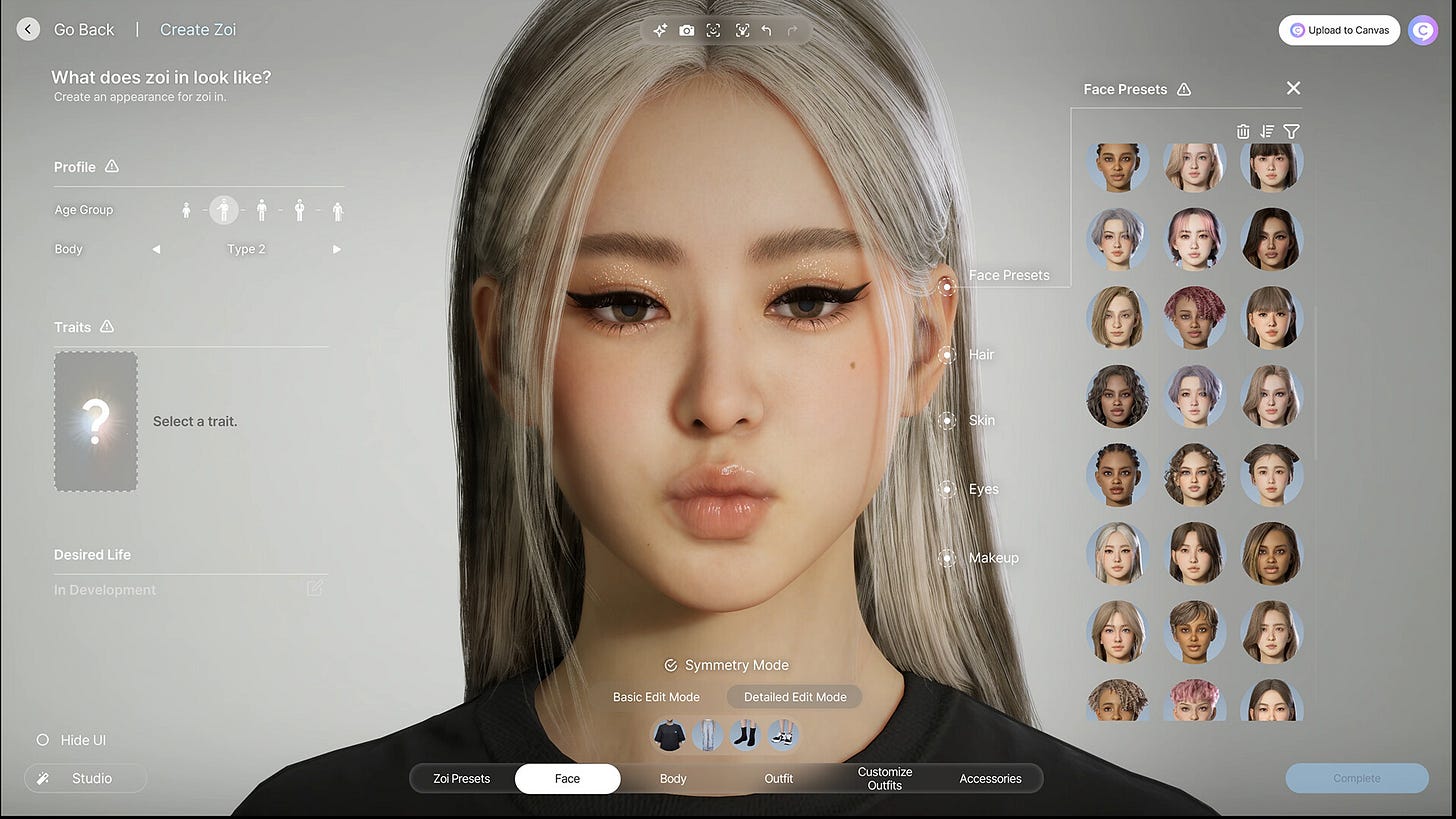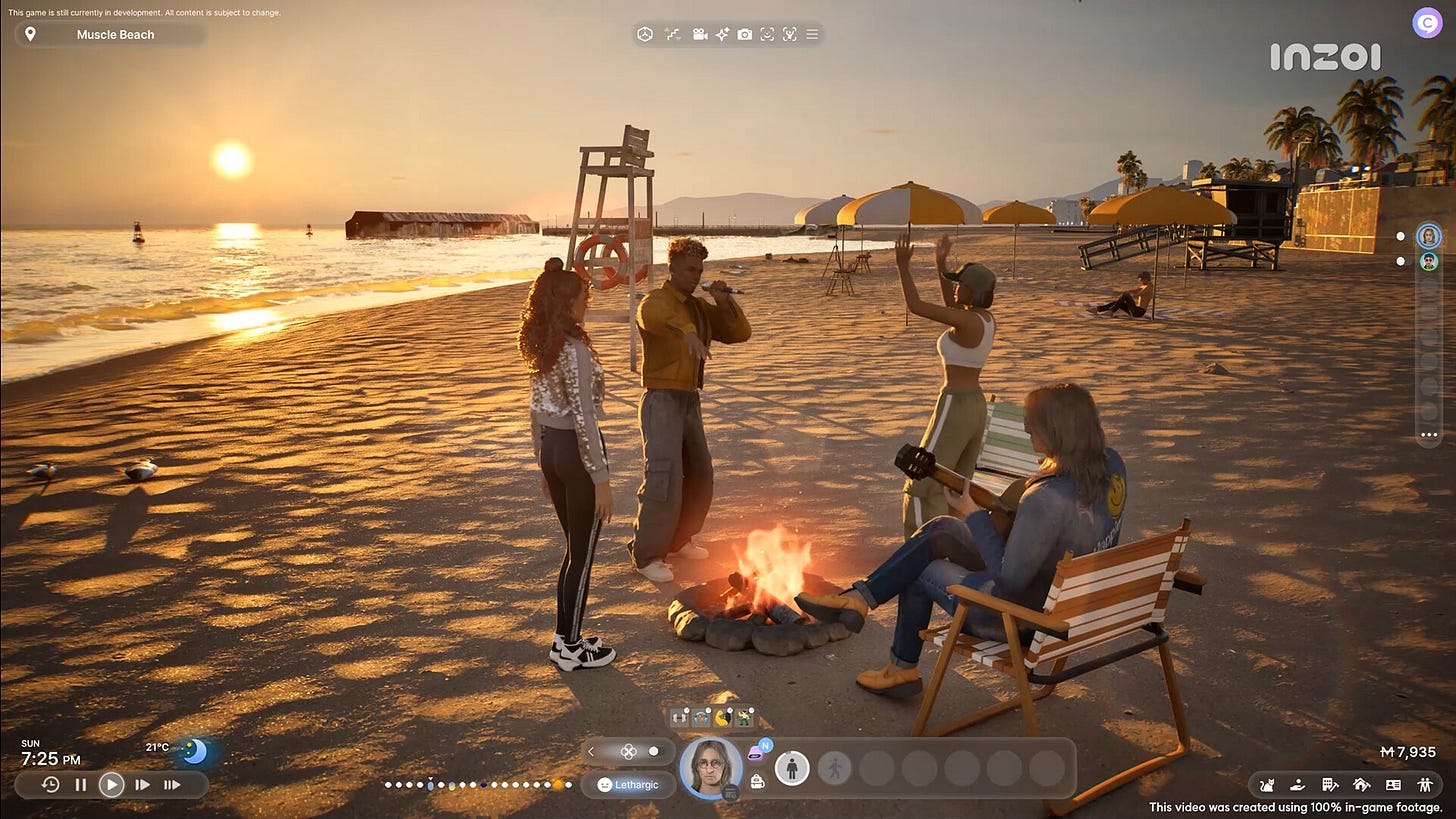InZOI: A Paradigm Shift in Agentic Simulation Through AI
InZOI redefines player agency, environmental dynamism, and character autonomy
Introduction
The life simulation genre, long dominated by franchises like The Sims, is undergoing a transformative evolution with the introduction of InZOI, a groundbreaking title developed by Krafton. Leveraging cutting-edge AI technologies, InZOI redefines player agency, environmental dynamism, and character autonomy. This paper examines how InZOI integrates generative AI, autonomous NPC systems, and emergent storytelling mechanics to create a living, breathing virtual world. By analyzing its technical architecture, ethical implications, and gameplay innovations, we argue that InZOI represents a critical milestone in the convergence of AI and interactive entertainment.
Architectural Foundations: NVIDIA ACE and On-Device AI Models
At the core of InZOI lies NVIDIA ACE (Avatar Cloud Engine), a suite of RTX-accelerated technologies that enable real-time generative AI for non-playable characters (NPCs). Unlike traditional rule-based NPCs, InZOI's "Smart Zois" utilize a Small Language Model (SLM) distilled from the Mistral-Nemo-Minitron family, optimized for low-latency inference on consumer GPUs. This 2.5-billion-parameter model processes player prompts (e.g., "prioritize acts of kindness") to generate context-aware behaviors, such as sharing food with homeless characters or initiating unprompted social interactions.
The SLM operates through a perception-action loop comprising four modules:
Perception: Processes multimodal inputs (audio, visual, textual) using models like NeMoAudio-4B-Instruct for environmental awareness.
Cognition: The Mistral-based SLM generates action plans aligned with character traits and player instructions.
Memory: E5-Large-Unsupervised embeddings enable long-term retention of interactions, allowing Zois to reference past events.
Animation: Audio2Face-3D synchronizes lip movements with AI-generated dialogue, while procedural animation systems adjust body language based on emotional states.
This architecture enables agentic workflows where Smart Zois autonomously adjust daily schedules, form relationships, and pursue life goals without scripted directives. At day's end, the SLM summarizes experiences into journal entries that inform future decisions, creating emergent narrative arcs.
Generative AI and Player-Driven Content Creation
InZOI democratizes game asset creation through three AI-powered tools:
1. 3D Printer Studio
Players upload 2D images (e.g., furniture designs) to generate textured 3D models via a diffusion-based generative model. The system employs CUDA-accelerated neural networks to infer depth maps and material properties, converting sketches into game-ready assets in under 10 seconds. This tool has enabled community-created content ranging from Balinese-inspired villas to steampunk vehicles, with over 12,000 user-generated items shared on the Canvas platform within the first month.
2. Dynamic Texture Synthesis
A StyleGAN-3 derivative allows texture generation through textual prompts (e.g., "mid-century modern fabric") or image style transfer. The model runs locally via DirectML, enabling real-time previews on mid-range GPUs. Ethical safeguards filter out copyrighted material, though debates persist about the system's reliance on web-scraped training data.
3. Emote Engine
By analyzing input videos (e.g., TikTok dances), a temporal convolutional network extracts motion vectors to animate Zoi avatars. This system achieved 94% accuracy in replicating complex gestures during beta testing, though occasional kinematic errors persist in multi-character interactions.
Emergent Social Dynamics and Complex Systems
The game simulates a 300-Zoi ecosystem where each character possesses 400+ "mental elements" – quantifiable traits like empathy, ambition, and risk tolerance. These parameters interact through a modified Boids algorithm, producing emergent social phenomena:
Rumor Propagation: Zois share gossip through a graph neural network, with misinformation spreading faster among characters with low critical thinking scores.
Economic Cascades: A LSTM-based market model simulates supply/demand shifts when multiple Zois pursue identical careers, dynamically adjusting job availability and wages.
Epidemiology: Disease transmission follows a SEIR (Susceptible-Exposed-Infected-Recovered) model, with infection rates modulated by hygiene behaviors and public policy settings.
During a 2025 stress test, these systems produced unscripted events like a veganism movement (initiated by 12% of Zois reducing meat consumption) and a housing market crash triggered by speculative investing. Such complexity comes at a computational cost – the community simulation consumes 38% of CPU resources on mid-tier systems, necessitating aggressive LOD optimizations in Unreal Engine 5.
Ethical and Technical Challenges
Memory Hallucinations
The SLM's limited context window (128k tokens) occasionally causes "memory drift," where Zois conflate past events. In one documented case, a Zoi falsely accused another of theft due to overlapping narrative embeddings. Krafton mitigates this through nightly memory validation checks, though 9% of players report immersion-breaking inconsistencies.
Hardware Stratification
While the base game runs on GTX 1060 GPUs, Smart Zoi features require RTX 3070+ for acceptable performance. This creates a bifurcated player base, with 73% of early access participants disabling AI NPCs to improve frame rates.
Labor Implications
The 3D Printer Studio reduced asset creation time by 60%, leading to layoffs at Krafton's external modeling studios. While the company claims AI "augments rather than replaces" artists, union reports indicate a 22% reduction in contracted 3D artist roles since launch.
Future Directions and Industry Impact
InZOI's success has catalyzed three industry trends:
Localized AI Agents: Microsoft's Phi-3 and Meta's Llama-3 now offer game-optimized SLMs, enabling InZOI-like NPCs on Xbox Series S and mobile devices.
Procedural Rights Management: NVIDIA's upcoming "GenToken" system will watermark AI-generated content, addressing copyright concerns raised by the Textile and Garment Workers Union.
Cross-Platform Emergence: Krafton plans to connect InZOI cities via a federated learning framework, allowing macroeconomic trends to propagate between player instances.
Conclusion
InZOI demonstrates that generative AI can transcend gimmickry when deeply integrated into gameplay systems. By combining SLM-driven autonomy with player co-creation tools, it achieves unprecedented dynamism in life simulation – albeit with notable technical and ethical trade-offs. As the industry grapples with AI's disruptive potential, InZOI serves as both a blueprint and cautionary tale, proving that agentic systems demand rigorous validation frameworks to maintain player trust. Future work must address hardware inclusivity and labor impacts to ensure these technologies benefit all stakeholders in the gaming ecosystem.







